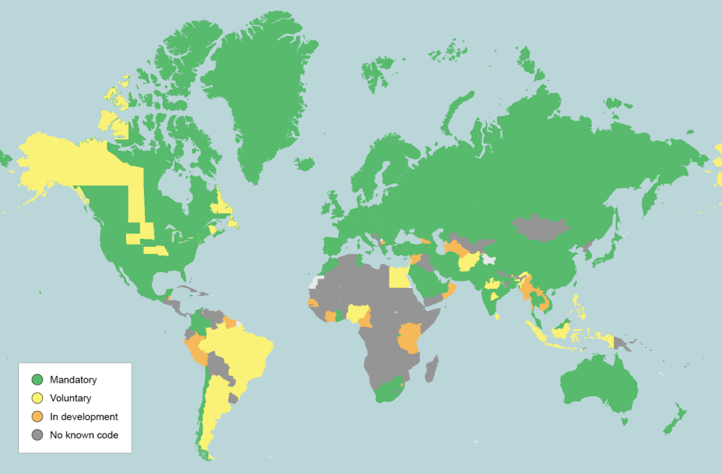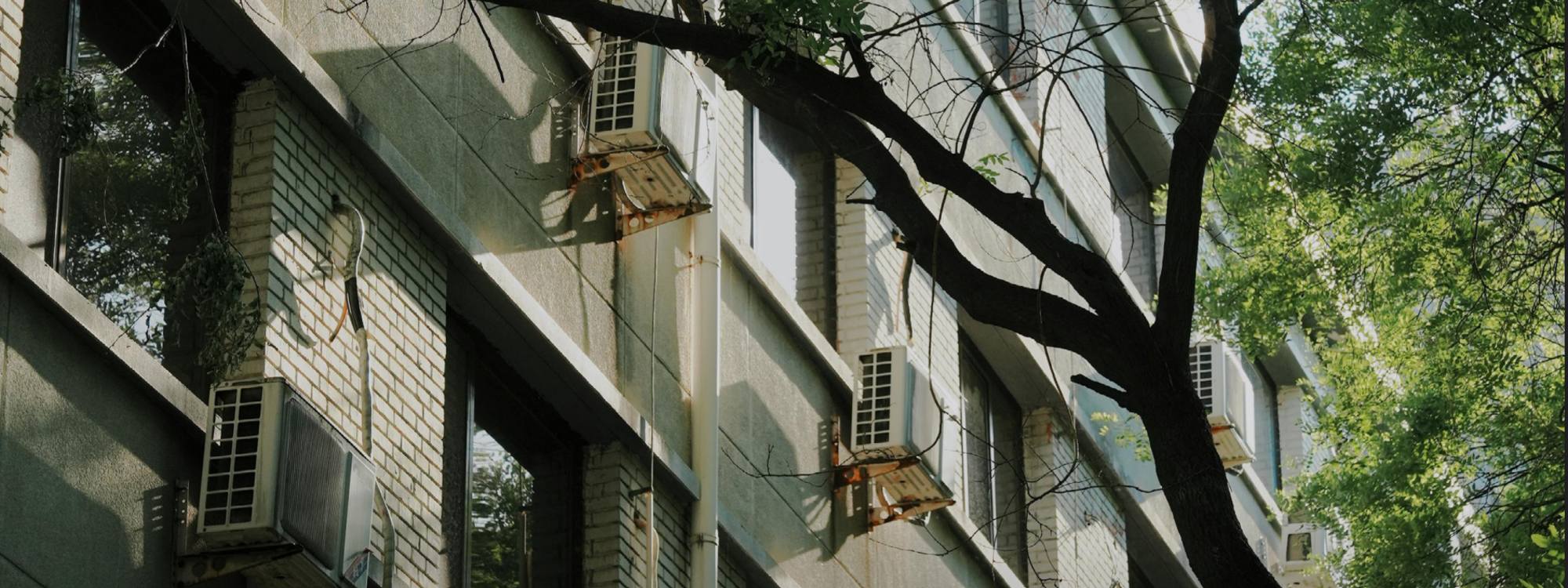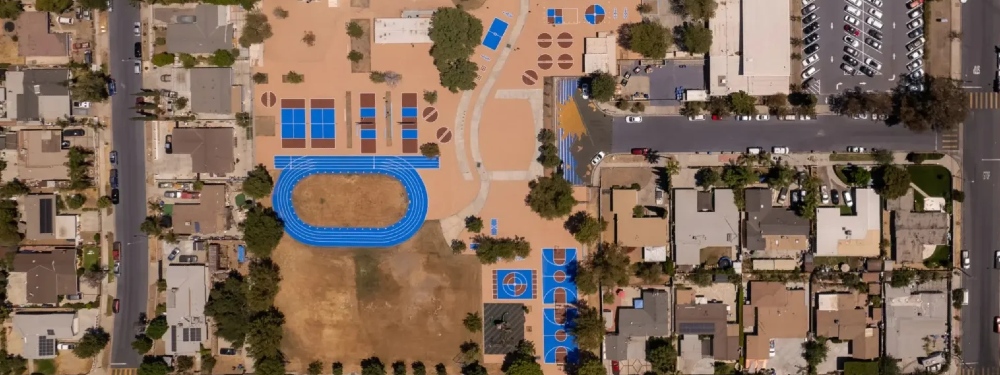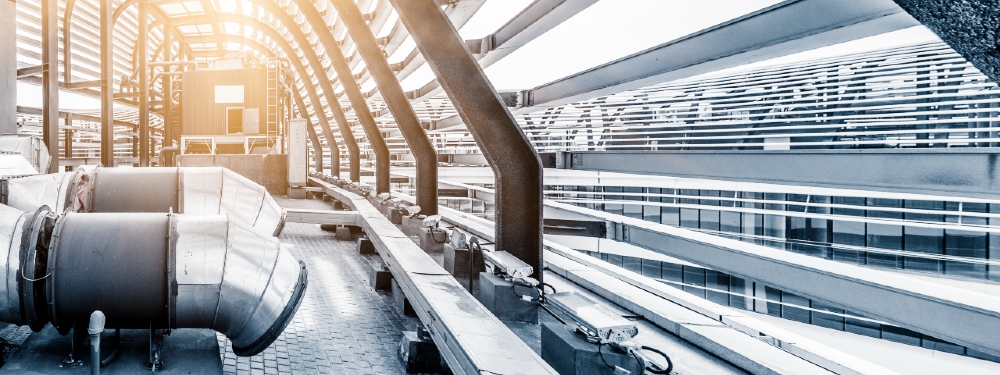Riddle me this: How can you stay cool without an air conditioner?
By improving the use of passive cooling solutions in the design of our buildings and cities, we can improve thermal comfort and reduce the need for energy-intensive cooling appliances like air conditioners.
Today’s cooling technologies produce more than 7% of the world’s greenhouse gas (GHG) emissions, and without clean cooling technologies and a full renewable energy transition, these emissions could double by 2050. This trajectory is exactly the opposite of what we need as we fight to limit global temperature rise to 1.5°C (2.7°F).
To avoid this outcome – and to ensure that everyone has access to the cooling they need in this warming world – we urgently need to transform how we cool ourselves, our food, and our medicines. But how?
Firstly, we should reduce the need for mechanical cooling (e.g., air conditioning), or where possible in some climate zones, avoid its use all together. This can be achieved by improving the design of our cities (which are heating up at twice the global average rate) and our buildings (be they single-family homes, apartment complexes, informal settlements, schools, offices, or factories) to make them naturally cooler.
Where mechanical cooling remains necessary, we must optimize our technologies and how they’re used to be more energy efficient, grid friendly, and climate friendly so as to minimize their climate impact.
Both these efforts must also coincide with work to increase access to efficient, climate-friendly cooling solutions for low-income and at-risk communities to ensure that no one is left behind.
Keeping cool, naturally
By scaling up the adoption of passive cooling solutions, we can simultaneously reduce heat stress and the need for mechanical cooling, which in turn will cut energy use and GHG emissions and deliver cost savings.
According to the Economist Intelligence Unit, reducing the need for air conditioning could avoid US$2.6 trillion in infrastructure investments and the emission of 5.6Gt CO2e1.
“Passive cooling is the practice of using non-mechanical technology, design elements, and/or nature-based solutions to keep a space cool without using energy.”
We can passively cool our buildings and cities using an array of techniques including efficient building envelopes (e.g., insulated walls, etc.), reflective surfaces (e.g., ‘cool’ roofs, walls, and pavements), shading (e.g., trees, building overhangs, etc.), and blue and green infrastructure (e.g., water features, trees, etc.).
At the city-level, the widespread application of cool roofs and pavements can reduce summer temperatures by 3.6–5.4°F (2–3°C) and tree canopies and vegetation can reduce peak summer temperatures by 1.8–9°F (1–5°C).
At the building-level, insulating walls, roofs, and windows can reduce energy needs for cooling by 10-40% in hot climates and a reflective roof can reduce the need for cooling in a building by up to 70%. In fact, if buildings were designed to make inhabitants feel comfortable naturally, then it is possible to reduce the need for mechanical cooling by 50–80%.
Despite their effectiveness, there’s an ongoing challenge of scaling up these solutions through building codes, land-use policy, capacity-building, workforce development, and awareness-raising efforts.
Maximizing passive cooling in the built environment
Moving forward, our CCC portfolio will include efforts to maximize the adoption of passive cooling solutions in the built environment. In doing so, we hope to see new developments incorporate better building envelopes and passive cooling techniques and cities using heat-informed urban planning and design that integrate passive cooling strategies as part of a holistic urban cooling solution set.
To maximize our impact, our work will focus on policy-level and community-based interventions that integrate passive cooling measures in urban planning and construction, as well as other ad hoc and cross-cutting opportunities.
‘Heat-informed’ urban planning
Urban planners and designers can prioritize the implementation of passive cooling strategies alongside mechanical cooling interventions such as adopting energy-efficient cooling appliances.
One example of this work is a UNEP-GGGI project in Vietnam, which is supporting select pilot cities in developing Urban Cooling Action Plans (UCAPs) that integrate extreme heat mitigation activities into a range of government plans and policies. On the ground, the pilots will implement best-practice recommendations from the Sustainable Cooling Handbook for Cities.
Strengthening supply-side and workforce capacity
To scale up the adoption of passive cooling solutions, we must also ensure that there is the capacity to support it, in terms of both workforce and materials.
For example, our implementing partner and winner of the Million Cool Roofs Challenge, Cool Roofs Indonesia, is working to expand the local production of cool roof coatings, with the aim of reducing the cost of cool roof material production by around 20%, making cool roofs even more accessible. They are also planning to set up Indonesia’s first testing facility for solar reflective materials to ensure product quality and performance.
Ambitious building codes
According to the International Energy Agency (IEA), the world’s building stock is expected to double between now and 2050 and it’s vital that these new buildings are built with thermal comfort and energy efficiency in mind to avoid us locking in high levels of energy use for decades to come. Improving building efficiency before or during construction is also much easier and less costly than making retrofits later.
Unfortunately, only 80 countries have building codes and standards – which specify the minimum energy performance standards for residential and commercial buildings – in place.

In many of our focal geographies, the greatest opportunities to impact large swaths of buildings is to focus on new construction by updating building codes. Examples of this work in our NDC Support Facility include a UNEP-UNESCAP project in Cambodia and a GGGI project in Burkina Faso.
Passive cooling for a cooler future for all
While an important part of the toolbox, we cannot simply rely on air conditioners alone to help us survive rising global temperatures. The growth in energy demand from the billions of additional cooling appliances will produce a significant amount of GHG emissions, which will lead to more warming and drive further demand for cooling. Additionally, those who cannot afford to buy and operate air conditioners will be left behind to suffer the extreme temperatures that are becoming so increasingly familiar.
By scaling up the use of passive cooling solutions we can increase thermal comfort while reducing the demand for mechanical cooling, which in turn will reduce the sector’s GHG emissions and lower energy bills for consumers. It will also improve the health, well-being, and resilience of people that live and work in urban heat island areas, as well as improving local air quality through reduced emissions.
Of course, this work alone won’t solve the cooling challenge. It must coincide with efforts to drastically improve our cooling technologies and to expand access to at-risk communities, but more on these topics later…





